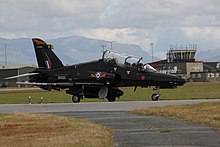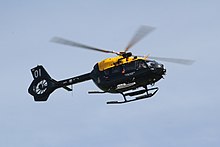
Royal Air Force Leeming or more simply RAF Leeming is a Royal Air Force station located near Leeming, North Yorkshire, England. It was opened in 1940 and was jointly used by the RAF and the Royal Canadian Air Force (RCAF). Between 1950 and 1991, it operated mostly as a training base with Quick Reaction Force (QRF) Panavia Tornado F3 fighters based there in the latter stages of the Cold War and into the early 21st century. Since 2006, it has become the home of the deployable RAF communications cadre and the home of No. 135 Expeditionary Air Wing.

Royal Air Force Barkston Heath or RAF Barkston Heath is a Royal Air Force Relief Landing Ground under the command of RAF Cranwell near Grantham, Lincolnshire, England.

Royal Air Force Mona, or more simply RAF Mona, is a Royal Air Force station near Bodffordd on the island of Anglesey, Wales. It is primarily used as a relief landing ground for RAF Valley.

Royal Air Force Syerston, commonly known simply as RAF Syerston, is a Royal Air Force station in the parish of Flintham, near Newark, Nottinghamshire, England. Opened in 1940, it was used by the Royal Air Force (RAF) as a bomber base during the Second World War, operating Vickers Wellingtons, Avro Manchesters, and the Avro Lancaster heavy bombers. Post-war, it became home to Jet Provosts of the 2 Flying Training School. It is now home to the Royal Air Force Central Gliding School.
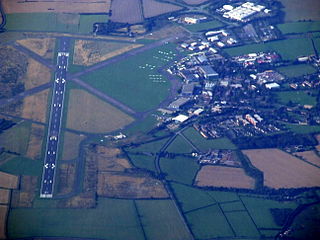
Cranfield Airport is an airfield just outside the village of Cranfield, in Bedfordshire, England. It is 7 NM south-west of Bedford and 5.5 NM east of Milton Keynes. It was originally a Second World War aerodrome, RAF Cranfield. It is now used for business aviation, private flights, and for research and development activities.

The Central Flying School (CFS) is the Royal Air Force's primary institution for the training of military flying instructors. Established in 1912 at the Upavon Aerodrome, it is the longest existing flying training school. The school was based at RAF Little Rissington from 1946 to 1976. Its motto is Imprimis Praecepta, Latin for "The Teaching is Everlasting".

White Waltham Airfield is an operational general aviation aerodrome located at White Waltham, 2 nautical miles southwest of Maidenhead, in the Royal Borough of Windsor and Maidenhead in Berkshire, England.

Newtownards Aerodrome is a local airfield in Newtownards, County Down, Northern Ireland. It is located 8.5 NM east of Belfast. This airport offers light aircraft flights, helicopter flights, microlight flights and flight simulator training. The airport also has an onsite restaurant.

Royal Air Force Chilbolton or RAF Chilbolton is a former Royal Air Force station in Hampshire, England. The airfield was located in Chilbolton approximately 4 miles (6.4 km) south-southeast of Andover, about 62 miles (100 km) southwest of London.

Royal Air Force Balderton or more simply RAF Balderton was a former Royal Air Force station located 2.0 miles (3.2 km) south of Newark-on-Trent, sandwiched between the now extinct Great Northern Railway (GNR) Bottesford-Newark line and the A1 road in Nottinghamshire, England.
Royal Air Force Oakington or more simply RAF Oakington was a Royal Air Force station located 0.5 miles (0.80 km) north of Oakington, Cambridgeshire, England and 5.1 miles (8.2 km) northwest of Cambridge.
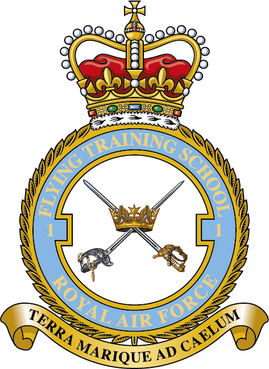
The No. 1 Flying Training School is the oldest military pilot training school in the world, currently used to deliver rotary training to aircrew of the British armed forces.
Royal Air Force Wymeswold, or more simply RAF Wymeswold, is a former Royal Air Force satellite station located 3.5 miles (5.6 km) north-east of Loughborough, Leicestershire, England. The airfield is situated between Hoton, Wymeswold and Burton on the Wolds, lying in the current district of Charnwood.

Royal Air Force Christchurch or more simply RAF Christchurch is a former Royal Air Force satellite station and was located southeast of the A337/B3059 junction in Somerford, Christchurch, Dorset, England.

The UK Military Flying Training System (UKMFTS) takes UK armed forces aircrew from initial training through elementary, basic, and advanced flying training phases, preparing them for their arrival at their designated operational aircraft units. It is operated by Ascent Flight Training, a consortium of Lockheed Martin and Babcock International under a 25-year Private Finance Initiative (PFI) contract for the UK's Ministry of Defence (MoD), with oversight from the MoD. The airworthiness authority for each aircraft type, for example, is fulfilled by military and civilian staff within Defence Equipment and Support. Apart from the overall contract, the main elements of the system include fixed-wing elementary, multi-engine and fast-jet pilot training, rear crew training and rotary-wing (helicopter) training.
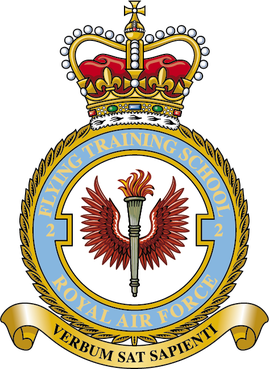
No.2 Flying Training School is a Flying Training School (FTS) of the Royal Air Force (RAF). It is part of No. 22 (Training) Group that delivers glider flying training to the Royal Air Force Air Cadets. Its headquarters is located at RAF Syerston in Nottinghamshire and gliding takes places from several sites throughout the UK using the Grob Viking T1. The RAF Central Gliding School is also under its command.
No. 6 Flying Training School RAF is a Flying Training School (FTS) within No. 22 (Training) Group of the Royal Air Force that delivers flying training to University Air Squadrons and Air Experience Flights.
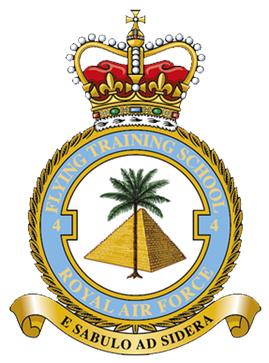
No. 4 Flying Training School is a Royal Air Force military flying training school, which manages Advanced Fast Jet Training (AFJT) from its base at RAF Valley in Anglesey, Wales. Its role is to provide fast jet aircrew to the Operational Conversion Units for the RAF's jet attack aircraft, the Eurofighter Typhoon and the Lockheed Martin F-35 Lightning II.

No. 7 Flying Training School is a former Royal Air Force flying training school that operated between 1935 and 1994.







